News
Interview: ‘The First Purge’ Director Gerard McMurray
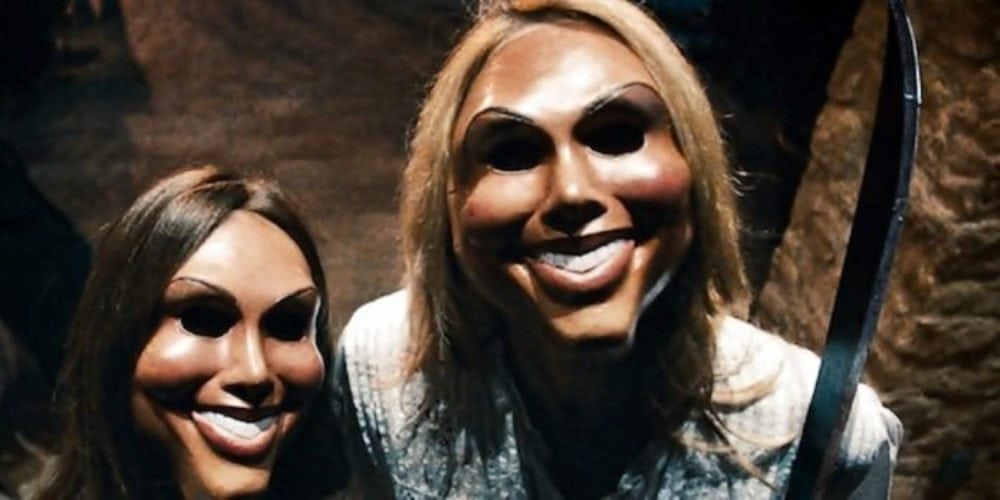
After directing the first three Purge films, James DeMonaco selected Gerard McMurray to direct The First Purge. “After writing and directing three Purge films in five years, I was ready to hand over the directing duties,” says DeMonaco. “Gerard saw the Purge films as I see them—as genre films but also as sociopolitical commentaries about race, and class, and gun control in our country.”
In this interview, Gerard McMurray talks about the making of the making of The First Purge and the unique influences he brought to the film, which details the evolution of Purge Night. The First Purge opens in theaters on July 4.
DG: Gerard, what attracted you to this project?
GM: What attracted me to this particular Purge film was James DeMonaco’s script. It was terrific and took place inside of an urban neighborhood. The story felt very personal to me; it felt like home. I instantly identified with the main characters, and I had a vision immediately. Also, The First Purge has a spirit of resistance that I identify with. My father taught me from an early age to stand up for myself, to fight for what is right, and to protect my community. So, I saw a lot of my own ideals in the main character. The storyline is layered, and I relished the opportunity to make some great political commentary on the present state of our country through a story whose society closely mirrors our own. This is a huge opportunity to do something unique, fresh, and contemporary.
DG: After James DeMonaco directed the first three Purge films, what do you think you brought to this fourth film that’s unique from other directors who might have made this film, including James?
GM: I think I bring a very different cultural tone to the film. This story takes place on Staten Island and follows the journey of a group of Black and Brown people seeking to survive the First Purge night. I grew up in the 7th ward of New Orleans, which is a predominantly Black neighborhood. The characters in this Purge and their journey mirror some experiences that I have had in my lifetime. I feel like my life experience, as a Black man in America, gives me a unique perspective on telling an authentic story about what the Purge could look like inside of an inner-city neighborhood.

DG: Gerard, what was the visual strategy that you and your cinematographer discussed prior to the start of filming, and how would you describe the look and tone of the film?
GM: While defining the look and tone of the film with my cinematographer, I aimed to distinguish this film from the other Purge movies, since it is a prequel, not a sequel. Previous discussions with Blumhouse and Platinum Dunes, made it clear to me that they liked the visual look of my first film, Burning Sands, and wanted to do something closer to it tonally, than they did in other Purge movies.
I explained my vision for this film as an homage to 1990s hood movies. I grew up as a teenager in the ’90s, so movies like Do the Right Thing, Boyz N the Hood, Menace II Society, New Jack City, King of New York, and other films from that era weighed heavily on my choices for shot selection and overall tone. I feel like the contrast between ’90’s-style and a modern horror/action adventure/political thriller make for an interesting interpretation of The First Purge and add a new flavor to the film. Aesthetically, it was important for to me to enhance the texture of the environments, and portray the various cultures represented in the movie with beauty and elegance.
I also wanted the movie to look big, so I chose to do a lot of wide and crane shots, capturing the community while making the action sequences and personal interactions much closer and intimate. I want the audience to feel the dramatic and emotional journeys of the characters, to feel fear with them, as well as love, to get a thrill of the desperation they experienced on Purge night. At moments, we let the camera flow and dance with the characters, to give the audience a feeling of reality and humanity with them showing that, ultimately, the Purge affects everyone—regardless of their skin color and economic status.
DG: How would you describe the mayhem and violence that takes place in this film, compared to the previous films, and what do you think audiences will find most compelling, frightening, about this film?
GM: The previous Purge films all have their own unique personality. I wanted my take on the Purge to stand out. I wanted to return to that intimacy that we saw in the first movie, while incorporating that feeling of being out in the neighborhood, to show all the gleeful mayhem taking place in the streets.
My goal was to keep the Purge violence feeling as real as possible so the type of mayhem and violence in my film echoes things that I fear, which I think makes this film have its own unique level of scariness and terror for audiences. I wanted my film to have a grit and a realness to it that makes people feel like “Wow, this could happen in real life.” The contrast between seeing these very relatable characters have to deal with the realities of Purge night adds a different dimension of scariness to this film.
DG: Other than being an origin film, a prequel, what do you think sets this film apart from the previous three films?
GM: This film is different because it is set during the first Purge night, so the characters don’t really know what to expect. In other Purge films, society has become used to the Purge, and a lot of people even enjoy it. But in this film, no one really knows what to do, so you get a different experience.
Also, this Purge doesn’t spend time in the suburbs, dealing with the experience of middle- and upper-class people. Here, we are in the inner-city, experiencing it through the eyes of the people. Seeing the film from the perspective of the streets and the fear and terror these citizens have gives this film a different feel. As Jay-Z says, “The streets is watching.”
DG: What did the Buffalo filming location bring to this film that’s unique from other locations you might have chosen, and how would you describe the setting of the film?
GM: The City of Buffalo was an amazing place to shoot and Mayor Byron Brown and the Buffalo film commission really showed us love. Having access to every resource the city had to offer was incredibly helpful. Also, I think Buffalo itself lent a certain spirit for this film. When I imagined this Purge, I knew that it had to feel like an American city. American cities have a certain texture that is hard to replicate. Also, considering the setting for the film is the inner-city, I knew that we had to have a certain aesthetic when it came to the people and the environment. Buffalo was a great place to shoot because it has a strong Black and Latino presence. I felt like I could make Buffalo feel like Staten Island—based on the texture of the streets, the stores— and that I could cast local actors that looked like the people I grew up with. Buffalo really offered an authenticity that I liked.
DG: How would you describe the human dynamic that exists in this film?
GM: The human dynamic of my Purge lives within its characters and their varied experiences. I tried to create empathetic characters experiencing the gambit of raw human emotions that the audience can relate to. I also wanted to explore the innate need for human beings to do violent things, to Purge, and to show people giving into this need to Purge and relishing in the freedom that it brings them. I think that we take a multi-faceted approach to showing humanity in this film, and the many different ways humanity can manifest itself on Purge night.
DG: What is the name of Marisa Tomei’s character in this film, and how would you describe her role in this film?
GM: Marisa Tomei’s character is named The Architect because she is the psychologist who came up with the whole idea of The Purge. She feels that Purging is part of humanity, and that if people could give into their desires once a year, it would help alleviate some of the crime and violence that are consuming the country on a daily basis. In that vein, she is simply a scientist testing out her hypothesis in a controlled scientific experiment with human volunteers.
However, her character is also there to show the human side of those in power, and to show a different perspective of someone working with the NFFA. I want to thank Marisa for her honest portrayal, and her immense contribution to our film.
DG: What was the biggest challenge you faced in making this film?
GM: I think the biggest challenge in making this film has come down to making it scary. This film has so many elements, but at its core it is still a horror film. I feel comfortable communicating human emotions to the audience by putting the characters into situations where they experience fear and terror, but those things don’t necessarily translate into a good scare that will get audiences jumping out of their seats. But having the creative input from James DeMonaco, who created the world of The Purge, and producer Sébastien Lemercier helped me to tease out the tension in those moments, which made them scary. I hope that audiences enjoy what we have put together for them.
'Civil War' Review: Is It Worth Watching?
Follow our new YouTube channel "Mysteries and Movies" here.

Lists
Radio Silence Movies Ranked

Matt Bettinelli-Olpin, Tyler Gillett, and Chad Villella are all filmmakers under the collective label called Radio Silence. Bettinelli-Olpin and Gillett are the primary directors under that moniker while Villella produces.
They have gained popularity over the past 13 years and their films have become known as having a certain Radio Silence “signature.” They are bloody, usually contain monsters, and have breakneck action sequences. Their recent film Abigail exemplifies that signature and is perhaps their best film yet. They are currently working on a reboot of John Carpenter’s Escape From New York.
We thought we would go through the list of projects they have directed and rank them from high to low. None of the movies and shorts on this list are bad, they all have their merits. These rankings from top to bottom are just ones we felt showcased their talents the best.
We didn’t include movies they produced but didn’t direct.
Abigail
An update to the second film on this list, Abagail is the natural progression of Radio Silence’s love of lockdown horror. It follows in pretty much the same footsteps of Ready or Not, but manages to go one better — make it about vampires.
Ready or Not
This film put Radio Silence on the map. While not as successful at the box office as some of their other films, Ready or Not proved that the team could step outside their limited anthology space and create a fun, thrilling, and bloody adventure-length film.
Scream (2022)
While Scream will always be a polarizing franchise, this prequel, sequel, reboot — however you want to label it showed just how much Radio Silence knew the source material. It wasn’t lazy or cash-grabby, just a good time with legendary characters we love and new ones who grew on us.
Southbound (The Way Out)
Radio Silence tosses their found footage modus operandi for this anthology film. Responsible for the bookend stories, they create a terrifying world in their segment titled The Way Out, which involves strange floating beings and some sort of time loop. It’s kind of the first time we see their work without a shaky cam. If we were to rank this entire film, it would remain at this position on the list.
V/H/S (10/31/98)
The film that started it all for Radio Silence. Or should we say the segment that started it all. Even though this isn’t feature-length what they managed to do with the time they had was very good. Their chapter was titled 10/31/98, a found-footage short involving a group of friends who crash what they think is a staged exorcism only to learn not to assume things on Halloween night.
Scream VI
Cranking up the action, moving to the big city and letting Ghostface use a shotgun, Scream VI turned the franchise on its head. Like their first one, this film played with canon and managed to win over a lot of fans in its direction, but alienated others for coloring too far outside the lines of Wes Craven’s beloved series. If any sequel was showing how the trope was going stale it was Scream VI, but it managed to squeeze some fresh blood out of this nearly three-decade mainstay.
Devil’s Due
Fairly underrated, this, Radio Silence’s first feature-length film, is a sampler of things they took from V/H/S. It was filmed in an omnipresent found footage style, showcasing a form of possession, and features clueless men. Since this was their first bonafide major studio job it’s a wonderful touchstone to see how far they have come with their storytelling.
'Civil War' Review: Is It Worth Watching?
Follow our new YouTube channel "Mysteries and Movies" here.
News
Perhaps the Scariest, Most Disturbing Series of The Year

You may have never heard of Richard Gadd, but that will probably change after this month. His mini-series Baby Reindeer just hit Netflix and it’s a terrifying deep dive into abuse, addiction, and mental illness. What is even scarier is that it’s based on Gadd’s real-life hardships.
The crux of the story is about a man named Donny Dunn played by Gadd who wants to be a stand-up comedian, but it’s not working out so well thanks to stage fright stemming from his insecurity.
One day at his day job he meets a woman named Martha, played to unhinged perfection by Jessica Gunning, who is instantly charmed by Donny’s kindness and good looks. It doesn’t take long before she nicknames him “Baby Reindeer” and begins to relentlessly stalk him. But that is just the apex of Donny’s problems, he has his own incredibly disturbing issues.
This mini-series should come with a lot of triggers, so just be warned it is not for the faint of heart. The horrors here don’t come from blood and gore, but from physical and mental abuse that go beyond any physiological thriller you may have ever seen.
“It’s very emotionally true, obviously: I was severely stalked and severely abused,” Gadd said to People, explaining why he changed some aspects of the story. “But we wanted it to exist in the sphere of art, as well as protect the people it’s based on.”
The series has gained momentum thanks to positive word-of-mouth, and Gadd is getting used to the notoriety.
“It’s clearly struck a chord,” he told The Guardian. “I really did believe in it, but it’s taken off so quickly that I do feel a bit windswept.”
You can stream Baby Reindeer on Netflix right now.
If you or someone you know has been sexually assaulted, please contact the National Sexual Assault Hotline at 1-800-656-HOPE (4673) or go to rainn.org.
'Civil War' Review: Is It Worth Watching?
Follow our new YouTube channel "Mysteries and Movies" here.
Movies
The Original ‘Beetlejuice’ Sequel Had an Interesting Location
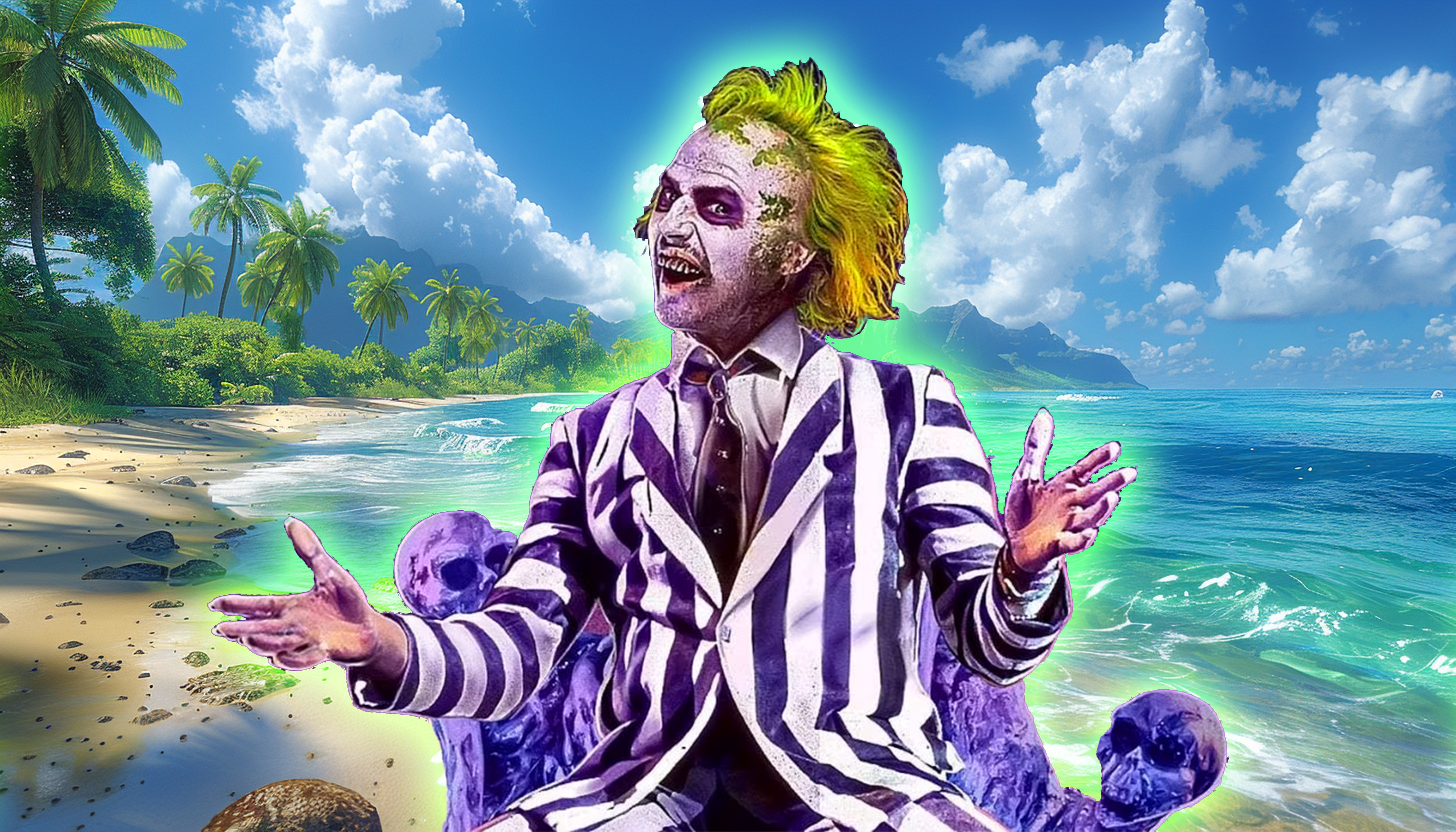
Back in the late ’80s and early ’90s sequels to hit movies weren’t as linear as they are today. It was more like “let’s re-do the situation but in a different location.” Remember Speed 2, or National Lampoon’s European Vacation? Even Aliens, as good as it is, follows a lot of the plot points of the original; people stuck on a ship, an android, a little girl in peril instead of a cat. So it makes sense that one of the most popular supernatural comedies of all time, Beetlejuice would follow the same pattern.
In 1991 Tim Burton was interested in doing a sequel to his 1988 original, it was called Beetlejuice Goes Hawaiian:
“The Deetz family moves to Hawaii to develop a resort. Construction begins, and it’s quickly discovered that the hotel will be sitting on top of an ancient burial ground. Beetlejuice comes in to save the day.”
Burton liked the script but wanted some re-writes so he asked then-hot screenwriter Daniel Waters who had just got done contributing to Heathers. He passed on the opportunity so producer David Geffen offered it to Troop Beverly Hills scribe Pamela Norris to no avail.
Eventually, Warner Bros. asked Kevin Smith to punch up Beetlejuice Goes Hawaiian, he scoffed at the idea, saying, “Didn’t we say all we needed to say in the first Beetlejuice? Must we go tropical?”
Nine years later the sequel was killed. The studio said Winona Ryder was now too old for the part and an entire re-cast needed to happen. But Burton never gave up, there were a lot of directions he wanted to take his characters, including a Disney crossover.
“We talked about lots of different things,” the director said in Entertainment Weekly. “That was early on when we were going, Beetlejuice and the Haunted Mansion, Beetlejuice Goes West, whatever. Lots of things came up.”
Fast-forward to 2011 when another script was pitched for a sequel. This time the writer of Burton’s Dark Shadows, Seth Grahame-Smith was hired and he wanted to make sure the story wasn’t a cash-grabbing remake or reboot. Four years later, in 2015, a script was approved with both Ryder and Keaton saying they would return to their respective roles. In 2017 that script was revamped and then eventually shelved in 2019.
During the time the sequel script was being tossed around in Hollywood, in 2016 an artist named Alex Murillo posted what looked like one-sheets for a Beetlejuice sequel. Although they were fabricated and had no affiliation with Warner Bros. people thought they were real.
Perhaps the virality of the artwork sparked interest in a Beetlejuice sequel once again, and finally, it was confirmed in 2022 Beetlejuice 2 had a green light from a script written by Wednesday writers Alfred Gough and Miles Millar. The star of that series Jenna Ortega signed on to the new movie with filming starting in 2023. It was also confirmed that Danny Elfman would return to do the score.
Burton and Keaton agreed that the new film titled Beetlejuice, Beetlejuice wouldn’t rely on CGI or other other forms of technology. They wanted the film to feel “handmade.” The film wrapped in November 2023.
It’s been over three decades to come up with a sequel to Beetlejuice. Hopefully, since they said aloha to Beetlejuice Goes Hawaiian there has been enough time and creativity to ensure Beetlejuice, Beetlejuice will not only honor the characters, but fans of the original.
Beetlejuice, Beetlejuice will open theatrically on September 6.
'Civil War' Review: Is It Worth Watching?
Follow our new YouTube channel "Mysteries and Movies" here.
-

 News5 days ago
News5 days agoWoman Brings Corpse Into Bank To Sign Loan Papers
-

 News6 days ago
News6 days agoHome Depot’s 12-Foot Skeleton Returns with a New Friend, Plus New Life-Size Prop from Spirit Halloween
-

 News4 days ago
News4 days agoBrad Dourif Says He’s Retiring Except For One Important Role
-

 Strange and Unusual4 days ago
Strange and Unusual4 days agoMan Arrested for Allegedly Taking a Severed Leg From Crash Site And Eating It
-

 Movies5 days ago
Movies5 days agoPart Concert, Part Horror Movie M. Night Shyamalan’s ‘Trap’ Trailer Released
-
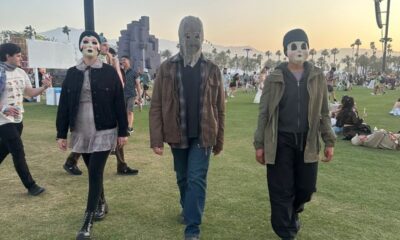
 Movies6 days ago
Movies6 days ago‘The Strangers’ Invaded Coachella in Instagramable PR Stunt
-

 Movies5 days ago
Movies5 days agoAnother Creepy Spider Movie Hits Shudder This Month
-
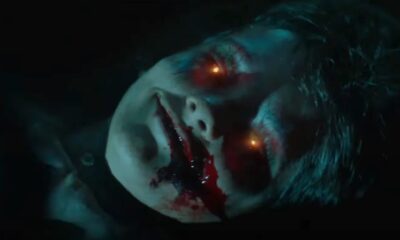
 Movies6 days ago
Movies6 days agoRenny Harlin’s Recent Horror Movie ‘Refuge’ Releasing in U.S. This Month
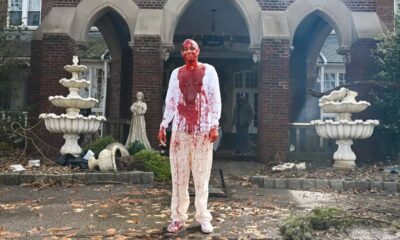



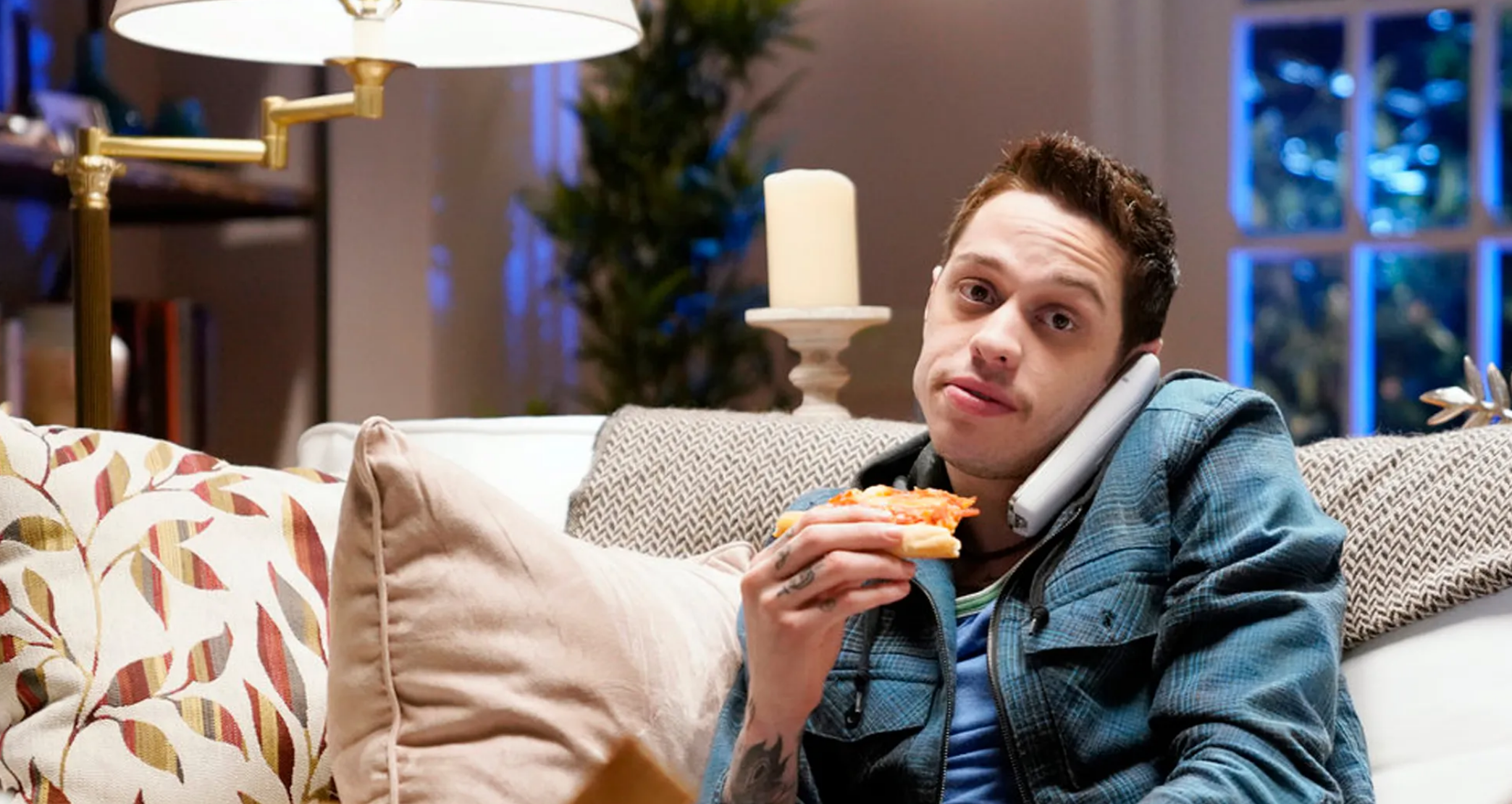


















You must be logged in to post a comment Login